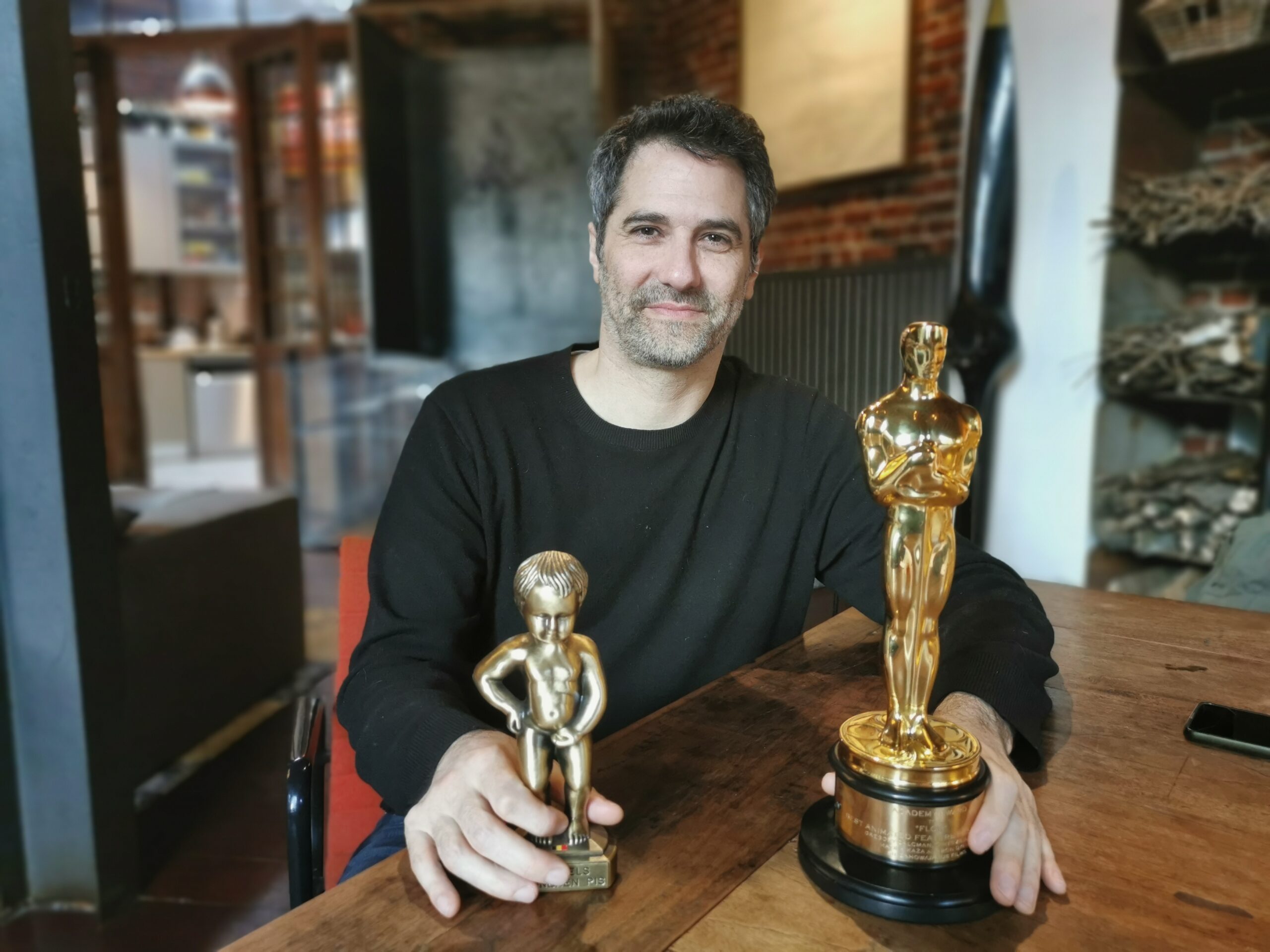A cinematic tidal wave, Flow has swept the world, much like the aquatic apocalypse it depicts.
The visually stunning animated feature made history as Latvia’s first-ever Oscar winner, defying the odds to triumph over industry giants like Pixar and Disney. But while Latvia celebrates its newfound status as an animation powerhouse, Belgium has its own reason to be proud: producer Gregory Zalcman and his Brussels-based company Take Five played a crucial role in bringing this poetic ecological fable to life.
For Latvia, Flow and its visionary director, Gints Zilbalodis, have become national treasures. The film’s David-versus-Goliath victory at the Academy Awards is even more astonishing considering it was created using Blender – free, open-source software – on a fraction of the budget that fuels Hollywood’s animation blockbusters. Yet, its universal message and breathtaking artistry have captured the imagination of audiences worldwide.
Zalcman is still glowing as he meets me at the Take Five office on Avenue du Roi in Saint-Gilles, just days after his whirlwind trip from Brussels to Los Angeles. On the table before us stands a hefty, golden Oscar statuette – fresh from the glitzy stage of the Dolby Theatre.
“I got back to my hotel at 3am and had to leave at 6am for LA,” he recalls, still somewhat jet-lagged but visibly elated. The journey took him from the red carpets of France’s prestigious César Awards in Paris straight to the glamour of Hollywood’s biggest night.
Inside, the sleep-deprived and jet-lagged Zalcman was relieved their category was near the beginning so they wouldn’t have to stew in stress for the whole event.
And then the unthinkable happened – Flow won.
Zalcman says he felt it as a “pure euphoria” – but mixed with some nerves. “You’re suddenly about to go on stage in front of 20 million people. I’m usually behind the camera not in front – I’m not so used to the spotlight.”
After the acceptance speech, they spent half an hour behind the scenes doing photos, interviews, and signing posters. “You feel like you’re gliding,” says Zalcman.
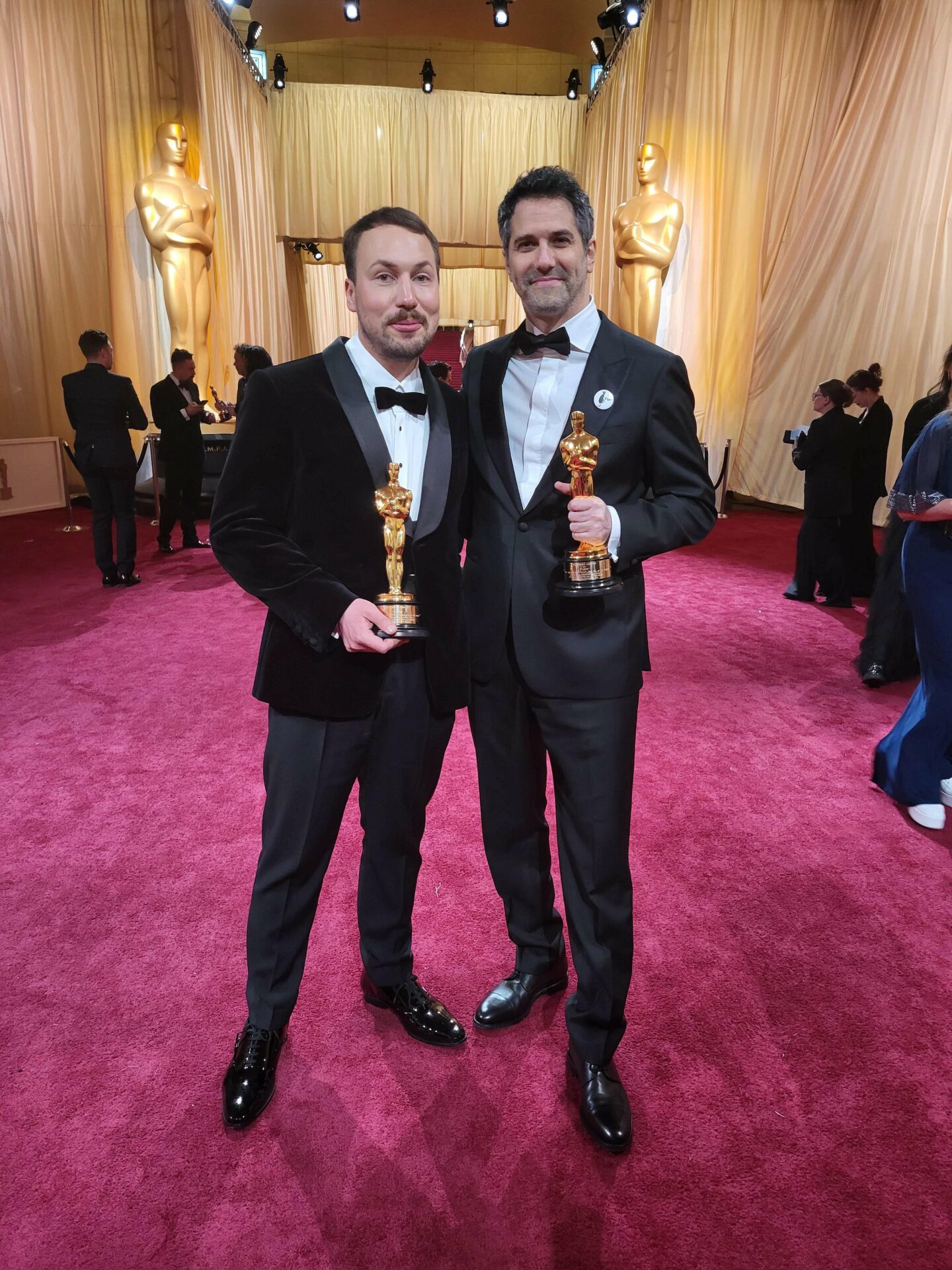
Flow's Gints Zilbalodis & Gregory Zalcman at the Oscars
The cat that got the cream
The dreamlike fantasy film about five animals clubbing together to survive an apocalypse came to the big time from very humble beginnings. It was made by just over 40 people, between Latvia, France and Belgium, and on a shoestring budget of $3.5 million. Compare that to fellow nominee, Disney-Pixar’s Inside Out 2 with its reported cost of $200 million and you can see how this little production has punched enormously above its weight.
But how did Belgium get involved?
It began with Take Five’s founding in 2005 by Zalcman and fellow producer Alon Knoll. Renowned for its eclectic portfolio spanning fiction features, animated films, and documentaries, the company has been instrumental in bringing diverse stories to the screen, including the acclaimed Emma Peeters (2018) and the documentary Misha and the Wolves (2021). Zalcman has established himself as a pivotal figure in the European film industry, his diverse range of genres underpinned by his commitment to innovative storytelling.
It was Take Five’s previous collaboration with French producer Ron Dyens that led to Flow. They had successfully co-produced another children’s animation, Sirocco and the Kingdom of the Winds. When Dyens, director Gints Zilbalodis, and Latvian producer Matīss Kaža were seeking another partner for another project, “Ron naturally thought of me,” says Zalcman.
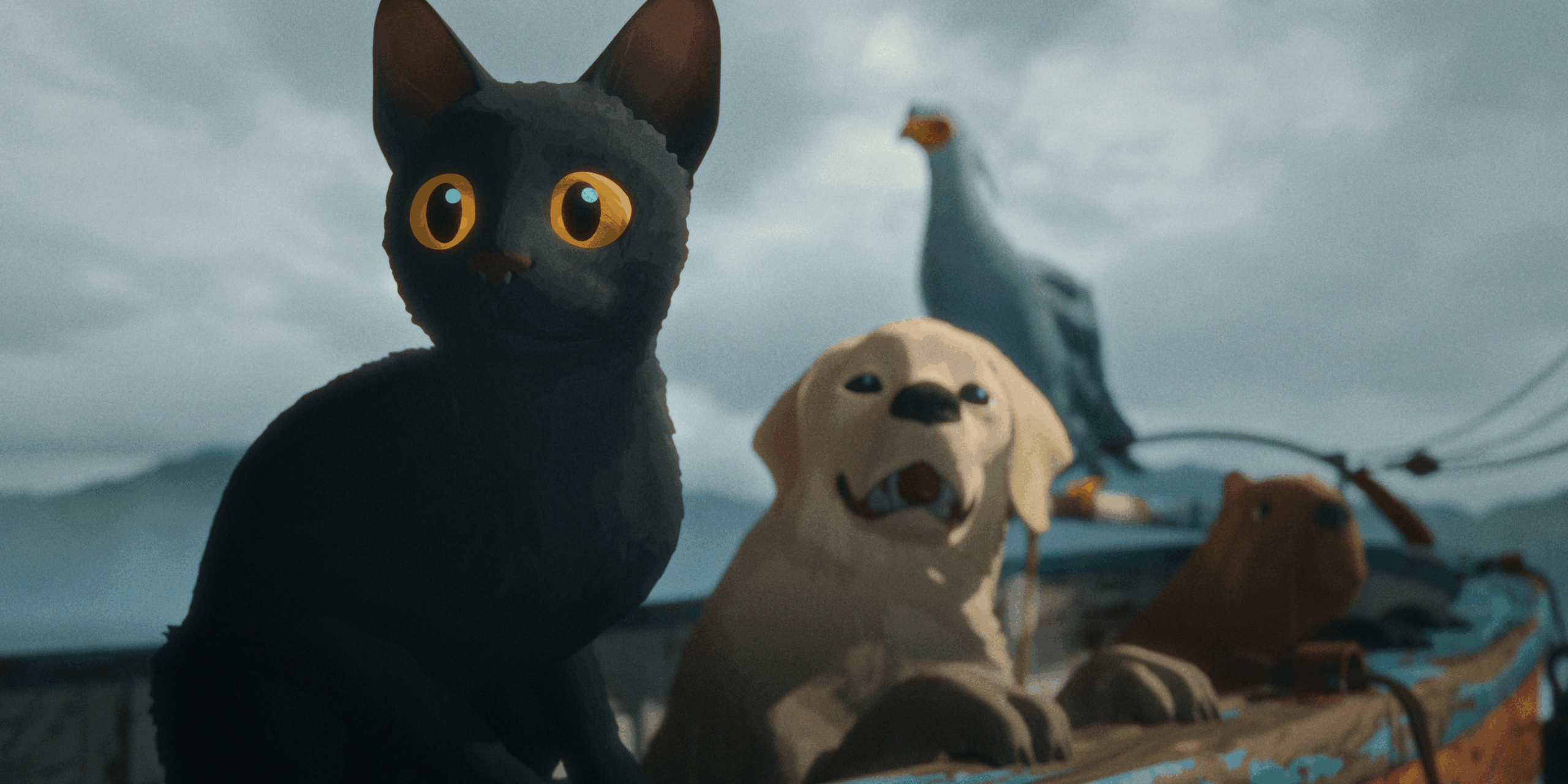
Still from Oscar-winning Flow (2024)
When the script came in, Zalcman was obviously intrigued by the story and the project. But what really clinched it for him was seeing the Latvian director’s previous acclaimed film, Away. “I was literally hypnotised,” says Zalcman. “You already see the ingredients there for Flow: immersive, poetic, contemplative moments without dialogues. Even the innovative camera movements, applying live-action techniques to animation, were groundbreaking.”
There was also Zilbalodis’ letter of intention, describing his plans. The Belgian didn’t hesitate: "Within 24 hours after seeing Away and reading Gints's intention note, I said to them: ‘I’m in.’”
Nine lives
Flow has garnered near-universal praise as a unique cinematic experience. The film portrays five animals navigating a post-apocalyptic landscape devoid of humans following an unexplained catastrophe. With no dialogue and a minimalist yet striking animation style, it diverges significantly from the conventional animated formula popularised by studios like Pixar and DreamWorks.
“I knew it was breaking all the codes of animation,” Zalcman says. “No dialogues, contemplative still moments, a non-photorealistic, minimalist visual design – none of the traditional ingredients.”
That means it was difficult to predict its wild success – among both reviewers and mass audiences alike. “At the start,” says Zalcman, “I thought it would do well at festivals, but I couldn’t foresee the commercial and critical impact it eventually achieved. Cinema is unpredictable; that's part of its magic.”
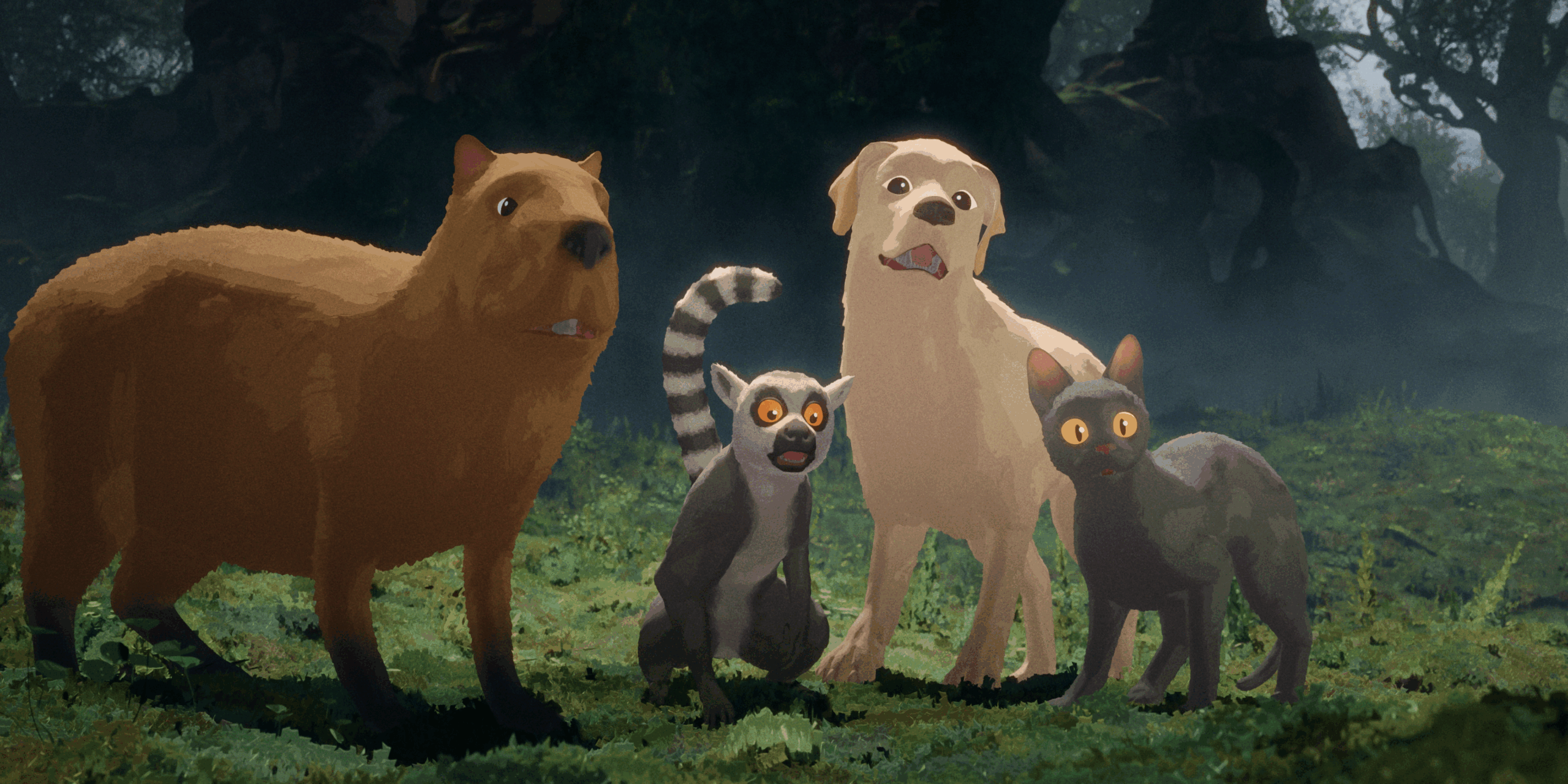
Still from Flow (2024)
Its unconventional approach is precisely what has drawn in audiences and critics alike. “People feel emotional – not necessarily sadness, but a profound appreciation for nature. It’s beautiful. It’s hopeful,” he says.
The different animals form bonds as they ally to survive – widely seen as a allegory for the friendships forged between diverse peoples in multicultural communities.
Likewise, film production is often borderless. Co-productions are the norm and the way movies can collect enough money from all the different funding bodies. Hence we are sitting in Brussels, discussing a Latvian-French-Belgian co-production.
All cats are grey at night
But how Belgian is Flow? Zalcman shares some statistics on their creative and financial contribution. “We did 20 percent of the animation and part of the sound design. Specifically, we handled Foley effects – animal footsteps, sounds of movement – and re-recording mixing, the final step in sound post-production,” he says.
This sound work was particularly important for a non-dialogue film. “The Foley effects — the movements of animals, their footsteps — differentiate their presence in the movie,” Zalcman explains. “Everything was done in the studio; you can't film a cat in water — it's neither good for the cat nor the crew.”
The financial input of the Belgian side was about 10 per cent. There was a lot of development in Latvia first: Zilbalodis had been working on the project for four years. And at the end of the process, it was sent back to Latvia for the final rendering of the animation. From the outside, though, the multifaceted co-production comes off as seamless as the fluid animation on screen.
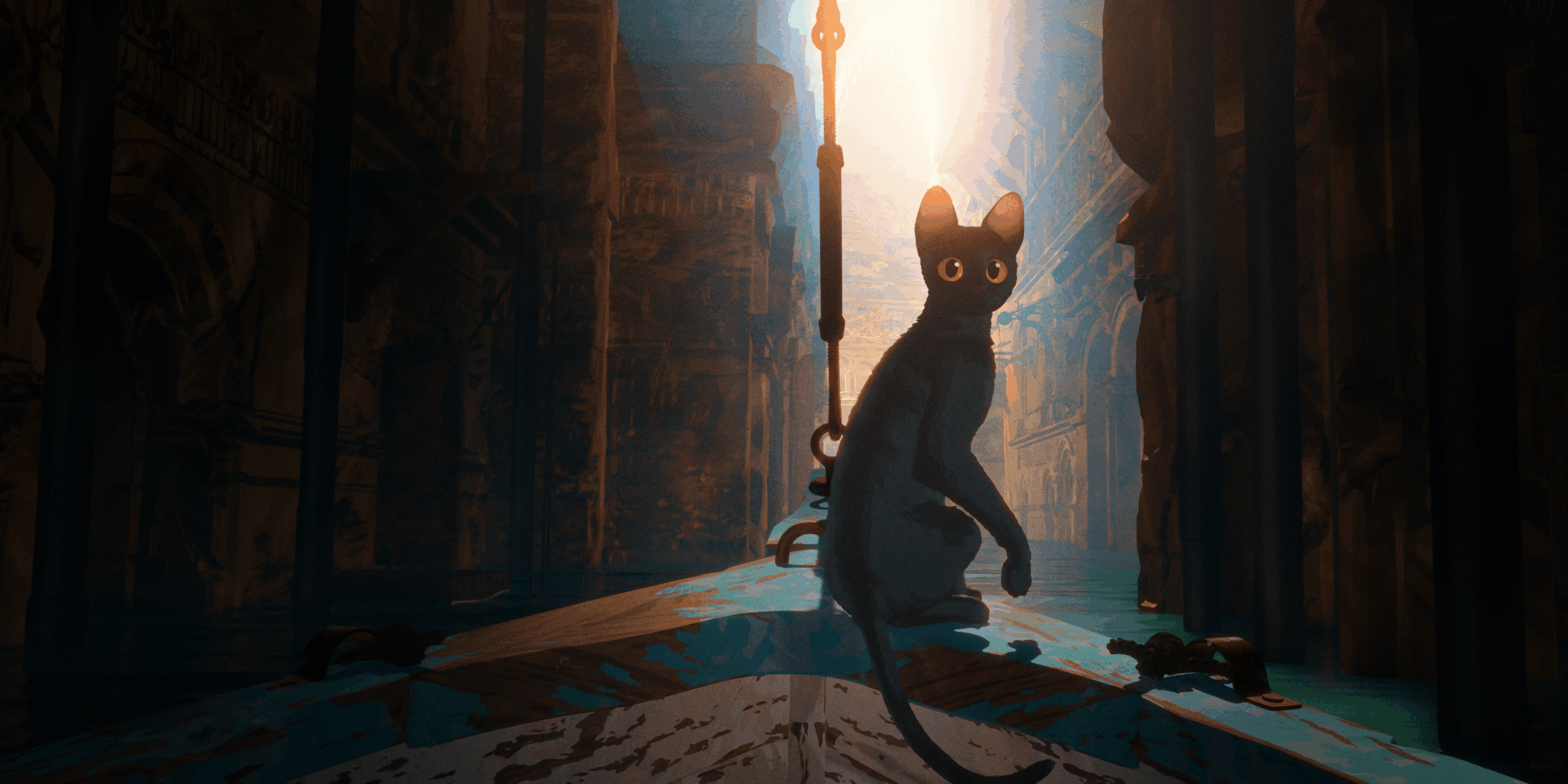
Still from Flow (2024)
As does the messaging. Reflecting on the deeper themes of Flow, Zalcman notes a subtle power. “The movie sensitises audiences to ecological questions without pushing a clear ecological agenda,” he says. “It invites viewers to use their imagination, to think actively about the cause of the ecological disaster. It could be God’s judgment or, as I believe, the catastrophic result of human mismanagement of the planet. Animals become innocent collateral victims.”
This subtlety allows audiences to engage deeply: “People feel emotional, not because they’re sad, but because they appreciate the beauty and humility conveyed. Gints deliberately leaves unanswered questions, allowing viewers to use their imagination.”
The absence of humans in the film is intentional and prompts other reflections. Did we know about the disaster and leave the animals behind, to survive in the mess we left? “It’s a profound meditation on the fragility of our environment,” says Zalcman, “yet it's not bleak; it's filled with hope.”
Cat’s pyjamas
Zalcman and his company are currently continuing their innovative trajectory in animation. They’re working on a short film titled Like a Beast by Bruno Tondeur, another post-apocalyptic tale set in a world ending due to humanity’s absurdity – like organising Winter Games in the Sahara or billionaires going into space. “The main characters’ final goal is to find a battery to charge their phones, even at the end of the world,” Zalcman adds with a smile. Additionally, Take Five is developing another animated feature set in Brussels about a society of birds dealing with a stolen-egg problem, offering a metaphorical commentary on migration and coexistence.
Such sensitive themes can be addressed indirectly by animation, whereas live action might be too obviously message-heavy. “Historically, animation in Europe has often criticised power subtly, like in the Czech Republic during the 1960s,” says Zalcman. “Flow works similarly – it’s not explicitly political but leaving room for reflection.”
That also means a broad appeal. Since Flow can’t be situated geographically or temporarily, it remains universally appealing. “Cats have no linguistic or cultural barriers. We identify with their instinct to survive, their need to overcome fears and work collaboratively.”
Zalcman refers to what the director Zilbalodis said in his acceptance speech: “We are all in the same boat,” he said to the amped-up crowd. “We must overcome our differences and find ways to work together.”
Asked whether Belgium is a fertile ground for groundbreaking cinema, Zalcman broadens the scope. “Not only Belgium but Europe has potential,” he says. “We’d better not compete directly with Pixar because we lack their budgets. Instead, we focus on originality and innovation. People want fresh experiences beyond traditional animation formulas. Flow proved audiences will embrace unique storytelling.”

